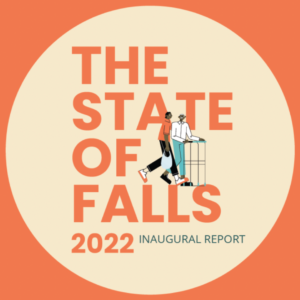How to Maximize Care Outcomes When Your Facility Is Short-Staffed

Josh Studzinski, vice president of go to market strategy and operations, Caremerge
In addition to the challenges of the pandemic, the senior care industry continues to face a workforce crisis that’s altering the care communities are able to provide. According to the State of the Long Term Care Industry report released by the American Health Care Association and the National Center for Assisted Living in September of 2021, those effects are significant and widespread.
The report reveals that, of the 1,183 nursing homes and assisted living providers surveyed, 99% of nursing homes and 96% of assisted living communities faced a staffing shortage. Additionally, 59% of nursing homes and 30% of assisted living communities surveyed reported experiencing high level staffing shortages.
The workforce crisis is a problem that senior care communities will face long-term. In light of that, it’s essential that communities find ways to continue to provide quality care to residents while also supporting staff mental health, even in light of these staffing issues.
The Importance of Protecting Staff During Short-Staffed Periods
When communities are short-staffed, existing staff may work extra shifts to help cover those gaps. This approach is problematic, though, and can create additional issues that a community then needs to address. Josh Studzinski, vice president of go to market strategy and operations at Caremerge, explains that such an approach leads to burnout as staff have to work long hours and have no time off to decompress.
“I think that’s where frontline staff are struggling,” he says. “Without the same staff resources to do jobs effectively, staff are asked to do more. The great resignation is going on and other companies are offering higher wages and remote work – it’s hard to compete against.”
Relying on staff to take on additional shifts can also take a toll on employee mental health. Studzinski explains that the pandemic has put a constant source of stress on our lives, changing what would have been common daily actions, like going to the movies or sending our kids to school, into decisions.
“Before the pandemic, we didn’t have to think so hard. Now, everything feels like a big decision,” he says. “That leads to a multitude of thoughts that make it very difficult to function in a job at 100%. Staff go to work and have to make more hard decisions, and they don’t have the ability to tap in another staff member when they feel burnt out and their mental health is struggling.”
Strategies to Provide Quality Care While Short-Staffed
Not only must senior care communities prioritize staff mental health, they also need to find ways to continue to provide quality care to residents, even in light of staffing challenges. Studzinski believes that communities need to examine their processes to accomplish this. He’s found that some communities are still using paper and relying on outdated manual processes. However, staffing challenges mean that these methods are no longer effective; the staff simply don’t have the time required to maintain these processes.
“You have less resources, time, and people, and your staff are struggling as-is,” says Studzinski. “Find ways to make things better for your staff. One way to do that is to leverage technology. Automate your processes, get insights into your residents, and start to change those processes that might have taken a lot of time. It’s time to start questioning the processes you have in place.”
When short staffing occurs unexpectedly, communities need to be able to quickly pivot. Studzinski believes that the gig economy can provide a solution to those short-term, short-notice staffing needs. In the gig economy, people are willing to quickly pick up hours, which can help to solve staffing gaps.
When onboarding those employees, communities can also rely on technology to speed that process along and get staff up to speed and working. But technology is truly useful only if it’s consolidated. Trying to balance multiple tools and platforms can take up valuable staff time, and new staff need to be trained on all of those platforms individually.
Looking Forward
The staffing shortage is a long-term problem, but senior care communities can take steps now to help ensure they’re staffed months and years down the road. Studzinski feels that there’s a branding challenge in getting younger adults to view senior living as a career path. “A lot of people don’t have the aging services industry at the top of their list,” he explains. But as the Boomer population ages, the senior care industry is poised for tremendous growth – and to provide career opportunities. “It’s not cool, it’s not Facebook or Amazon, but if you look at companies like Amazon, they’re moving into the senior living industry. They’ve created technology for people to help care for Mom and Dad at home.”
Studzinski notes that senior care communities need to jump on the marketing and branding trajectory, focusing on how senior care offers a great career path where staff can impact people’s lives and work with technology. “Start the marketing now,” he says. “It will start to pay dividends over 2022 and 2023. Soon, you’ll start to have a bigger pool of candidates.”

Paige Cerulli is a contributing writer to i Advance Senior Care.
Related Articles
Topics: Business Marketing Including Social Media and CRM , Featured Articles , Information Technology , Operations , Staffing , Technology & IT











